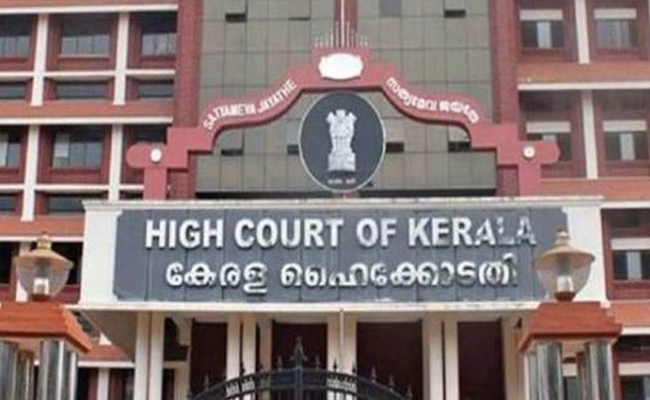Azmarin (Syria), Feb 6: A powerful 7.8 magnitude earthquake rocked wide swaths of Turkey and Syria early Monday, toppling hundreds of buildings and killing more than 2,300 people.
Hundreds were still believed to be trapped under rubble, and the toll was expected to rise as rescue workers searched mounds of wreckage in cities and towns across the area.
On both sides of the border, residents jolted out of sleep by the pre-dawn quake rushed outside on a cold, rainy and snowy night. Buildings were reduced to piles of pancaked floors, and major aftershocks or new quakes, including one nearly as strong as the first, continued to rattle the region.
Rescue workers and residents in multiple cities searched for survivors, working through tangles of metal and concrete. A hospital in Turkey collapsed, and patients, including newborns, were evacuated from facilities in Syria.
In the Turkish city of Adana, one resident said three buildings near his home were toppled. "I don't have the strength anymore," one survivor could be heard calling out from beneath the rubble as rescue workers tried to reach him, said the resident, journalism student Muhammet Fatih Yavuz.
"Because the debris removal efforts are continuing in many buildings in the earthquake zone, we do not know how high the number of dead and injured will rise," Turkish President Recep Tayyip Erdogan said. "Hopefully, we will leave these disastrous days behind us in unity and solidarity as a country and a nation."
The quake, which was centred on Turkey's southeastern province of Kahramanmaras, was felt as far away as Cairo. It sent residents of Damascus rushing into the street, and jolted awake people in their beds in Beirut.
It struck a region that has been shaped on both sides of the border by more than a decade of civil war in Syria. On the Syrian side, the swath affected is divided between government-held territory and the country's last opposition-held enclave, which is surrounded by Russian-backed government forces. Turkey, meanwhile, is home to millions of refugees from that conflict.
The opposition-held regions in Syria are packed with some 4 million people displaced from other parts of the country by the fighting. Many of them live in buildings that are already wrecked from past bombardments.
Hundreds of families remained trapped in rubble, the opposition emergency organisation, called the White Helmets, said in a statement.
Strained health facilities and hospitals were quickly filled with injured, rescue workers said. Others had to be emptied, including a maternity hospital, according to the SAMS medical organisation.
The region sits on top of major fault lines and is frequently shaken by earthquakes. Some 18,000 were killed in a similarly powerful earthquakes that hit northwest Turkey in 1999.
The US Geological Survey measured Monday's quake at 7.8. Hours later, a 7.5 magnitude one struck more than 100 kilometres (60 miles) away. An official from Turkey's disaster management agency said it was a new earthquake, not an aftershock, though its effects were not immediately clear. Hundreds of aftershocks were expected after the two temblors, Orhan Tatar told reporters.
Thousands of buildings were reported collapsed in a wide area extending from Syria's cities of Aleppo and Hama to Turkey's Diyarbakir, more than 330 kilometres (200 miles) to the northeast. A hospital collapsed in the Mediterranean coastal city of Iskenderun, but casualties were not immediately known, Turkey's vice president, Fuat Oktay, said.
Televisions stations in Turkey aired screens split into four or five, showing live coverage from rescue efforts in the worst-hit provinces. In the city of Kahramanmaras, rescuers pulled two children alive from the rubble, and one could be seen lying on a stretcher on the snowy ground.
Offers of help from search-and-rescue teams to medical supplies and money poured in from dozens of countries, as well as the European Union and NATO.
The damage evident from photos of the affected areas is typically associated with a significant loss of life while bitterly cold temperatures and the difficulty of working in areas beset by civil war will only complicate rescue efforts, said Dr. Steven Godby, an expert in natural hazards at Nottingham Trent University.
In Turkey, people trying to leave the quake-stricken regions caused traffic jams, hampering efforts of emergency teams trying to reach the affected areas. Authorities urged residents not to take to the roads. Mosques around the region were opened to provide shelter for people unable to return to damaged homes amid temperatures that hovered around freezing.
In Diyarbakir, hundreds of rescue workers and civilians formed lines across a mountain of wreckage, passing down broken concrete pieces, household belongings and other debris as they searched for trapped survivors while excavators dug through the rubble below.
In northwest Syria, the quake added new woes to the opposition-held enclave centered on the province of Idlib, which has been under siege for years, with frequent Russian and government airstrikes. The territory depends on a flow of aid from nearby Turkey for everything from food to medical supplies.
The opposition's Syrian Civil Defense described the situation there as "disastrous."
In a hospital in Darkush in Idlib, Osama Abdelhamid said most of his neighbours died. He said their shared four-story building collapsed just as he, his wife and three children ran toward the exit. A wooden door fell on them and acted as a shield.
"God gave me a new lease on life," he said.
In the small Syrian rebel-held town of Azmarin in the mountains by the Turkish border, the bodies of several dead children, wrapped in blankets, were brought to a hospital.
The Directorate-General of Antiquities and Museums in Syria said the earthquake has caused some damage to the Crusader-built Marqab, or Watchtower Castle, on a hill overlooking the Mediterranean. Part of a tower and parts of some walls collapsed.
In Turkey, meanwhile, the quake damaged a historic castle perched atop a hill in the centre of the provincial capital of Gaziantep, about 33 kilometres (20 miles) from the epicentre. Parts of the fortresses' walls and watch towers were levelled and other parts heavily damaged, images from the city showed.
The USGS said the quake was 18 kilometres (11 miles) deep.
Nearly 1,500 people were killed in 10 Turkish provinces, with some 8,500 injured, according to the president of the country's disaster management agency. The death toll in government-held areas of Syria climbed over 430 people, with some 1,280 injured, according to the Health Ministry.
In the country's rebel-held northwest, groups that operate there said the death toll was at least 380, with many hundreds injured.
Huseyin Yayman, a legislator from Turkey's Hatay province, said several of his family members were stuck under the rubble of their collapsed homes.
"There are so many other people who are also trapped," he told HaberTurk television by telephone. "There are so many buildings that have been damaged. People are on the streets. It's raining, it's winter."
Let the Truth be known. If you read VB and like VB, please be a VB Supporter and Help us deliver the Truth to one and all.
Kochi (PTI): The Kerala High Court has set aside crucial stages of the land acquisition process for the proposed Sabarimala greenfield airport, holding that the state failed to properly assess the minimum land actually required for the project.
On December 30, 2022, the state government issued an order granting sanction for the acquisition of 2,570 acres of land, comprising the Cheruvally Estate and an additional 307 acres located outside it.
Justice C Jayachandran, delivering the judgment on a writ petition filed by Ayana Charitable Trust (formerly Gospel for Asia) and its managing trustee Dr Siny Punnoose, ruled the decision-making process under the Right to Fair Compensation and Transparency in Land Acquisition, Rehabilitation and Resettlement Act, 2013, was legally flawed.
The court, in its December 19 order, directed the state to restart the process by conducting a fresh social impact assessment limited to examining the minimum land requirement, followed by a fresh appraisal by the expert group and reconsideration by the government.
The petitioners had challenged several government actions, including the Social Impact Assessment (SIA) report, the expert committee appraisal, the state government order approving the acquisition, and the subsequent notification under Section 11 of the 2013 Act.
The land in question, mainly the Cheruvally Estate in Pathanamthitta district, is proposed to be acquired for building a new airport intended to serve Sabarimala pilgrims.
The court found that while the state is entitled to acquire land for public purposes, the law clearly mandates that only the "absolute bare minimum" extent of land required for a project can be acquired.
According to the court, this mandatory requirement under Sections 4(4)(d), 7(5)(b), and 8(1)(c) of the 2013 Act was not properly complied with.
Justice Jayachandran observed that the authorities had shown "manifest non-application of mind" in assessing how much land was genuinely necessary.
As a result, the SIA report, the Expert Committee report and the government order were declared invalid to the extent they failed to address this crucial requirement.
Since the Section 11 notification could only be issued after a valid completion of these steps, it too was quashed.
On the petitioners' allegation of fraud on power and colourable exercise of authority, the court did not give a final finding. It held that this issue is closely linked to determining the minimum land required and can only be examined after that exercise is properly completed.
Before concluding, the court suggested that for technically complex projects like airports, the state should include technical experts in the SIA team to ensure informed and lawful decision-making.
The writ petition was accordingly allowed, keeping other issues raised by the petitioners open for future consideration.





